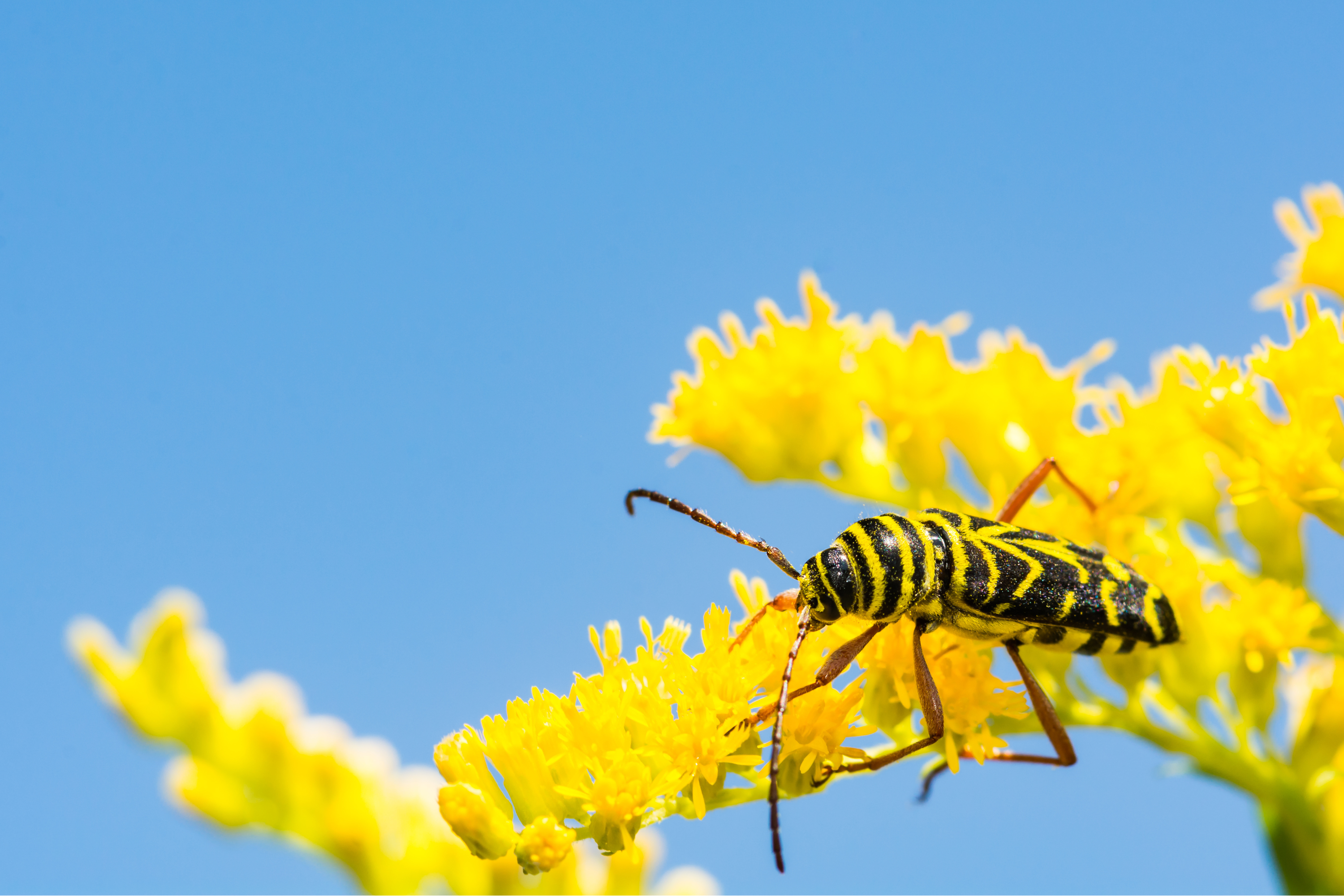
The Original Pollinators: How Beetles Help Keep Crops and Ecosystems Thriving
When you hear the word "pollinator," chances are bees, butterflies, or even hummingbirds come to mind. But did you know the first pollinators on Earth were beetles? Long before bees evolved, beetles were already visiting flowers—and today, they still play a critical role in supporting healthy crops and ecosystems.
Often overlooked or even seen as pests, beetles are essential pollinators, especially in certain plant systems. With their sheer diversity and unique behaviors, they help ensure the survival of plants that depend on them—and in turn, the crops we grow and the food we eat.
Beetles: The Pollination Pioneers
Beetles belong to the order Coleoptera, the largest group of insects in the world, with over 30,000 species in North America alone. Many of these beetles feed on nectar, pollen, and flower petals, making them regular visitors to flowering plants.
As they crawl across blossoms in search of food, beetles accidentally carry pollen from one flower to another. Their somewhat clumsy, lumbering approach may not be as graceful as a butterfly’s flutter, but it gets the job done—especially for plants that are designed to accommodate beetle pollination.
This method is sometimes called “mess and soil” pollination because beetles tend to chew on petals and parts of the flower as they go—leaving behind a bit of a mess but helping pollination in the process.
How Beetles Benefit Agriculture
While beetles aren’t the go-to pollinators for most commercial crops, they do support agriculture in indirect and crop-specific ways, especially in:
-
Diversified and organic farms with a wide variety of flowering plants
-
Crops that rely on open or bowl-shaped flowers, which are easier for beetles to access
-
Wild and native plant pollination, supporting biodiversity and soil health around crop fields
Some plants and crops that benefit from beetle pollination include:
-
Magnolias
-
Water lilies
-
Pawpaws
-
Spicebush
-
Wild roses
-
Cucumbers
-
Corn (by certain beetle species)
-
Palms and tropical fruits (in some regions)
In these cases, beetles help promote fruit set, seed development, and cross-pollination, which leads to healthier and more resilient plants.
What Makes Flowers Attractive to Beetles?
Plants pollinated by beetles often have:
-
Strong, fruity or spicy scents (sometimes even musty)
-
Large, open flowers that are easy to land on
-
Thick petals or fleshy structures that can withstand chewing
-
Abundant pollen, since beetles eat it directly
Beetle-pollinated plants have adapted over millions of years to work with these ancient insects—and those partnerships continue today, in both wild and cultivated settings.
Aren’t Beetles Also Pests?
Yes, some beetle species are known pests (like the Japanese beetle or cucumber beetle), especially in their larval stage.
However, not all beetles are harmful, and many are beneficial in multiple ways:
-
Some are pollinators.
-
Others are natural predators of harmful pests like aphids and caterpillars.
-
Still others help break down organic matter, improving soil health.
It's all about balance—recognizing the right kinds of beetles and creating environments where beneficial species can thrive.
How to Support Beetle Pollinators
Beetles are resilient, but like all pollinators, they face threats from modern agriculture and habitat loss.
You can support beetle pollinators by:
-
Planting native flowers, especially magnolias, elderberries, and pawpaws.
-
Leaving leaf litter and mulch where beetles can hide, breed, and overwinter.
-
Avoiding pesticide use, especially broad-spectrum insecticides.
-
Encouraging diverse plantings, which attract a variety of pollinators, including beetles.
The more varied and welcoming your growing space, the more likely you are to benefit from the quiet work of beetle pollination.
In Conclusion
Beetles may not have the charm of butterflies or the fame of honey bees, but their contribution to pollination is ancient, essential, and ongoing. From native plants to select crops, they help ensure a balanced ecosystem and a productive food system.
So next time you see a beetle lumbering around your flowers, resist the urge to squish—it might just be helping your garden grow.
Up next: The Most Common Pollinators That Help Your Garden Thrive
Share


